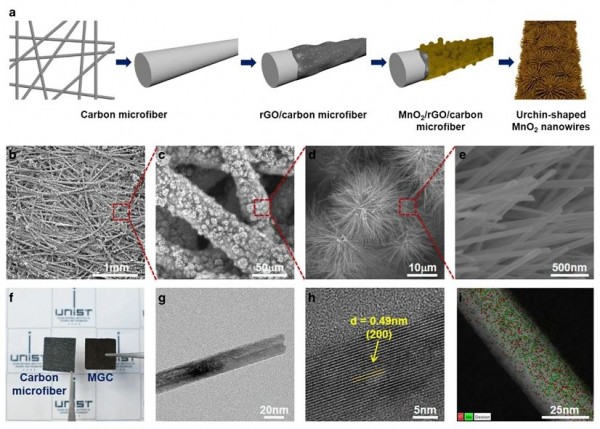Hierarchical urchin-shaped α-MnO2 on graphenecoated carbon microfibers: a binder-free electrode for rechargeable aqueous Na–air battery
- Journal
- NPG Asia Materials
- Vol
- 8
- Page
- e294
- Year
- 2016
- Link
- https://www.nature.com/articles/am2016104 157회 연결
With the increasing demand of cost-effective and high-energy devices, sodium–air (Na–air) batteries have attracted immense interest due to the natural abundance of sodium in contrast to lithium. In particular, an aqueous Na–air battery has fundamental advantage over non-aqueous batteries due to the formation of highly water-soluble discharge product, which improve the overall performance of the system in terms of energy density, cyclic stability and round-trip efficiency. Despite these advantages, the rechargeability of aqueous Na–air batteries has not yet been demonstrated when using non-precious metal catalysts. In this work, we rationally synthesized a binder-free and robust electrode by directly growing urchin-shaped MnO2 nanowires on porous reduced graphene oxide-coated carbon microfiber (MGC) mats and fabricated an aqueous Na–air cell using the MGC as an air electrode to demonstrate the rechargeability of an aqueous Na–air battery. The fabricated aqueous Na–air cell exhibited excellent rechargeability and rate capability with a low overpotential gap (0.7 V) and high round-trip efficiency (81%). We believe that our approach opens a new avenue for synthesizing robust and binder-free electrodes that can be utilized to build not only metal–air batteries but also other energy systems such as supercapacitors, metal–ion batteries and fuel cells.

